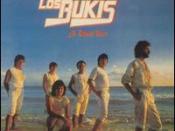Running Head: WEEK 4
Pain Assessment Tool for Postoperative Pain
[Writer Name]
[Institute Name]âÂÂ
�
Pain Assessment Tool for Postoperative Pain
Introduction
Its main disadvantage is its unreliability for the elderly or very young patients who may not be able to distinguish between the numbers (Flaherty 1996). Although the NRS has more categories than the VDS, they both consist of discrete categories, of which the respondent must choose only one. As a result, there is an element of forced choice. In the NRS-remains a popular choice among researchers, or on its own (Heron and Lozinguez 1999, Visser et al. 2000, Chen et al. 2001, Jensen et al. 2001), or in combination with VDS (Mercadente and et al. 2000, Kamel et al. 2001). For example, in Mercadente et al. (2000), pain was assessed in cancer patients (N = 10) using the VAS and other symptoms of nausea, vomiting, drowsiness, confusion, and dry mouth were assessed by the VDS.
Discussion
VAS was developed more than 70 years ago (Maxwell 1978), and perhaps the most widely used tool for assessment in the measurement of pain (Ohnhaus and Adler 1975, Gudex et al. 1996, Briggs and Dean 1998). In the first years of its existence, was popular VAS to measure subjective phenomena. Two of the leading supporters of this method were Clarke and Spear (1964) and Huskisson (1974). The latter uses the VAS to measure pain intensity. Since then, many researchers who are trying to measure pain using the VAS (Ohnhaus and Adler 1975, Price et al. 1983, Banos et al. 1989, Collins et al. In 1997, De Groot et al. 1997 DeLoach et al. 1998, Mercadente et al. 2000, Koho et al. 2001).
This scale consists of lines, typically 100 mm in length, or, sometimes, 150 or 160 mm (just as others are...


